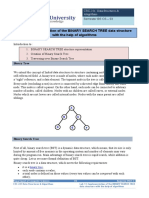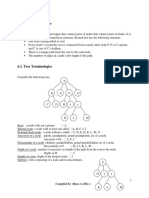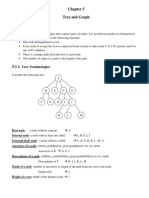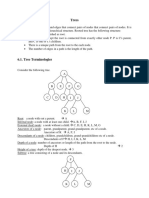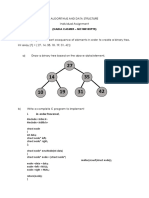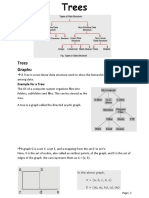0% found this document useful (0 votes)
29 views31 pagesChapter 5-Trees
This document provides an overview of trees in data structures, focusing on their definitions, terminologies, and various types such as binary trees and binary search trees. It details operations including insertion, searching, and deletion of nodes within binary search trees, along with their implementations in code. The document also explains different traversal methods and their applications in generating mathematical expressions.
Uploaded by
guyoboru12345Copyright
© © All Rights Reserved
We take content rights seriously. If you suspect this is your content, claim it here.
Available Formats
Download as PDF, TXT or read online on Scribd
0% found this document useful (0 votes)
29 views31 pagesChapter 5-Trees
This document provides an overview of trees in data structures, focusing on their definitions, terminologies, and various types such as binary trees and binary search trees. It details operations including insertion, searching, and deletion of nodes within binary search trees, along with their implementations in code. The document also explains different traversal methods and their applications in generating mathematical expressions.
Uploaded by
guyoboru12345Copyright
© © All Rights Reserved
We take content rights seriously. If you suspect this is your content, claim it here.
Available Formats
Download as PDF, TXT or read online on Scribd
/ 31








